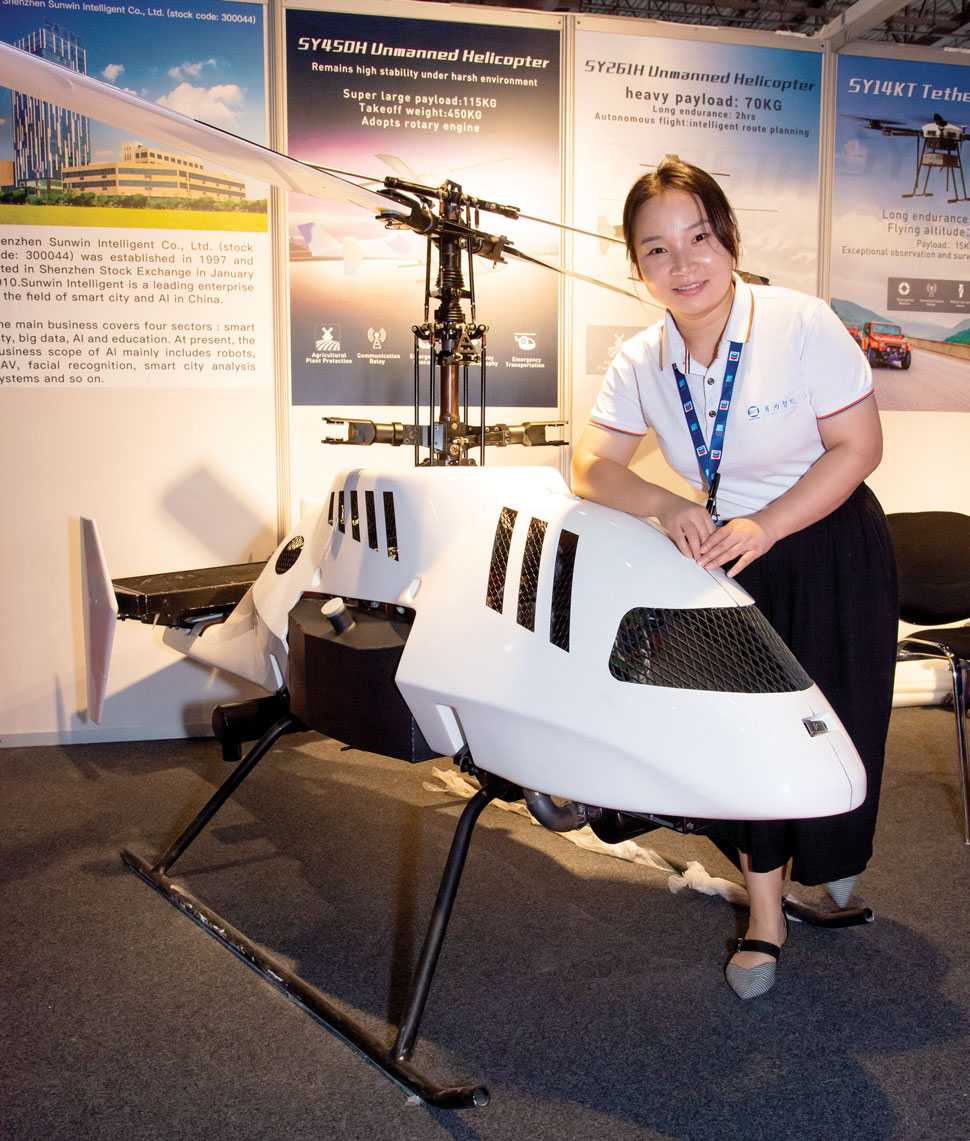Chinese Technology company Shenzhen Sunwin is making its international debut at the show, where it hopes to raise awareness among exhibitors and visitors of its Eagle family of unmanned air vehicles. Sunwin is also hoping to attract potential partners and distributors who can help to promote its line-up, which includes the SY450H, SY261H and SY14KT Eagles, to potential customers outside China and suggest any potential improvements that could enhance their appeal to international buyers.
Chinese Technology company Shenzhen Sunwin is making its international debut at the show, where it hopes to raise awareness among exhibitors and visitors of its Eagle family of unmanned air vehicles. Sunwin is also hoping to attract potential partners and distributors who can help to promote its line-up, which includes the SY450H, SY261H and SY14KT Eagles, to potential customers outside China and suggest any potential improvements that could enhance their appeal to international buyers.
Shenzhen Sunwin is exhibiting the SY261H and SY114KT civil UAVs at its stand. Launched in 2015, the SY261K is designed to carry loads of up to 70kg (154lb) and can be used for missions including logistics support and powerline patrol, crop spraying and surveillance. Priced at $260,000, the gasoline-powered aircraft can fly at speeds of up to 49kt (90km/h) and stay airborne for more than 2h. “Our sales so far have been to the Chinese market, with the government making up most of the orders to date,” says Shenzhen Sunwin vice-general manager Quince Hoo.

BillyPix
China is the only market so far for its SY114KT tethered drone, were the company has a number of customers. Quince says the UAV is “ideally suited” to emergency situations, where it can act as a “communication relay station” when there are no telecommunications links in and around the affected area. “The drone can fly to a height of 300m and operate within a radius of 2.5km from the affected area for up to 8h,” says Hoo.
She is confident the UAVs, which also include the larger and heavier SK450H, have a potentially strong market outside China. “We now need to find partners to help us expand into new regions,” says Hoo.


























